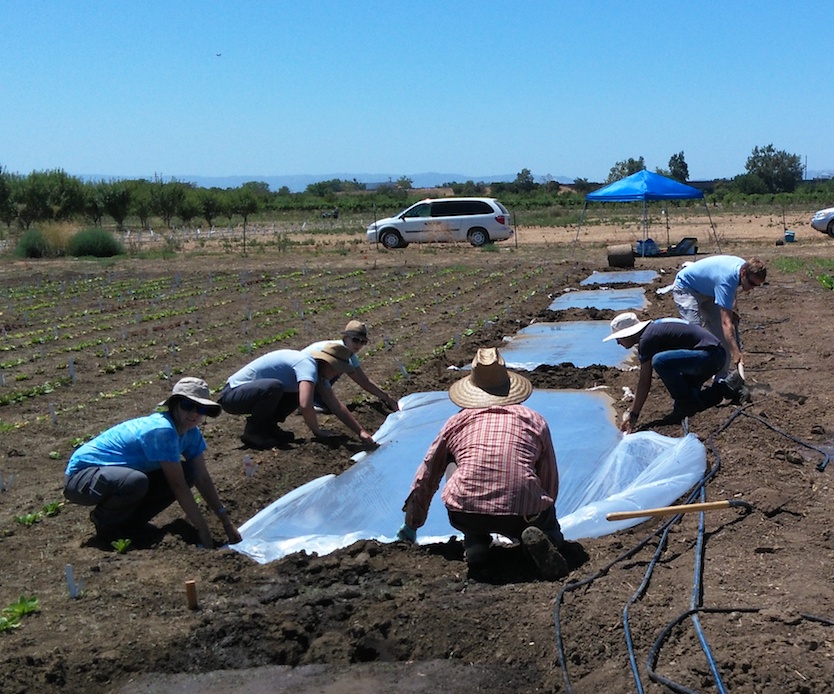
Biosolarization: A Sustainable Agriculture Practice that Improves Farmworker Safety
Small Grants, Big Impacts Series
My research in sustainable agriculture focuses on alternatives to fumigants, a class of pesticides used to control soil-borne pests, such as worms and weeds. Fumigants are commonly used prior to planting in strawberry and almond production in addition to many other California crops. They can be quite toxic, with short- and long-term health effects including irritation to the eyes, skin, and respiratory system as well as nausea, vomiting, and in extreme cases, death.
A key characteristic of common fumigants is their ability to move freely in the atmosphere over great distances as gases. If proper safety precautions are not taken, this can lead to a high risk of inhalation by agriculture workers and communities near fumigation sites.
An alternative to fumigants is biosolarization, which I am studying and received support to do so through the WCAHS Graduate Student Funding Program. Biosolarization can be used to eliminate, or at least significantly reduce, fumigant use. It works by combining high temperatures from solar heating with microbial fermentation to create a soil environment lethal to pathogens and weed seeds.

To start the process of biosolarization, we add compost and leftover skins and seeds from grape or tomato processing to the soil and the wet it. Next, a clear plastic tarp is tightly applied over the entire area to trap the heat from the sun in the soil. The compost and food processing waste encourage rapid growth of heat loving microbes that produce organic acids from fermentation. While these acids may be deadly for pests, they are relatively non-toxic to humans.
We have found that this method shows promise against several common crop pests, including major North American agricultural weeds, such as puncture vine and purslane, and Pratylenchus roundworms, which cause root lesion disease.
Besides lowering human health risk and making use of food waste, biosolarization has the potential to improve profitability for farmers and associated agricultural businesses. A report on the berry industry in the California counties of Monterey and Santa Cruz lists fumigation as one of the greatest costs to conventional berry growers and establishes pest control as the highest expense for their organic counterparts.
The cost of fumigation has been growing, in part, due to increasing regulations to protect agricultural workers and surrounding communities, such as the requirement for agricultural workers to wear protective gear (e.g., respirators and barrier clothing), establish fumigation buffer zones, and adhere to strict entry restrictions during and following fumigation.
Human safety, in addition to environmental health and financial practicality, remains central when exploring sustainable agriculture. The widespread use of soil fumigants—combined with their safety risks and expenditures—has created an immense need for safe and effective alternatives. My research will continue to investigate how biosolarization addresses these needs in agriculture to the benefit of all.
